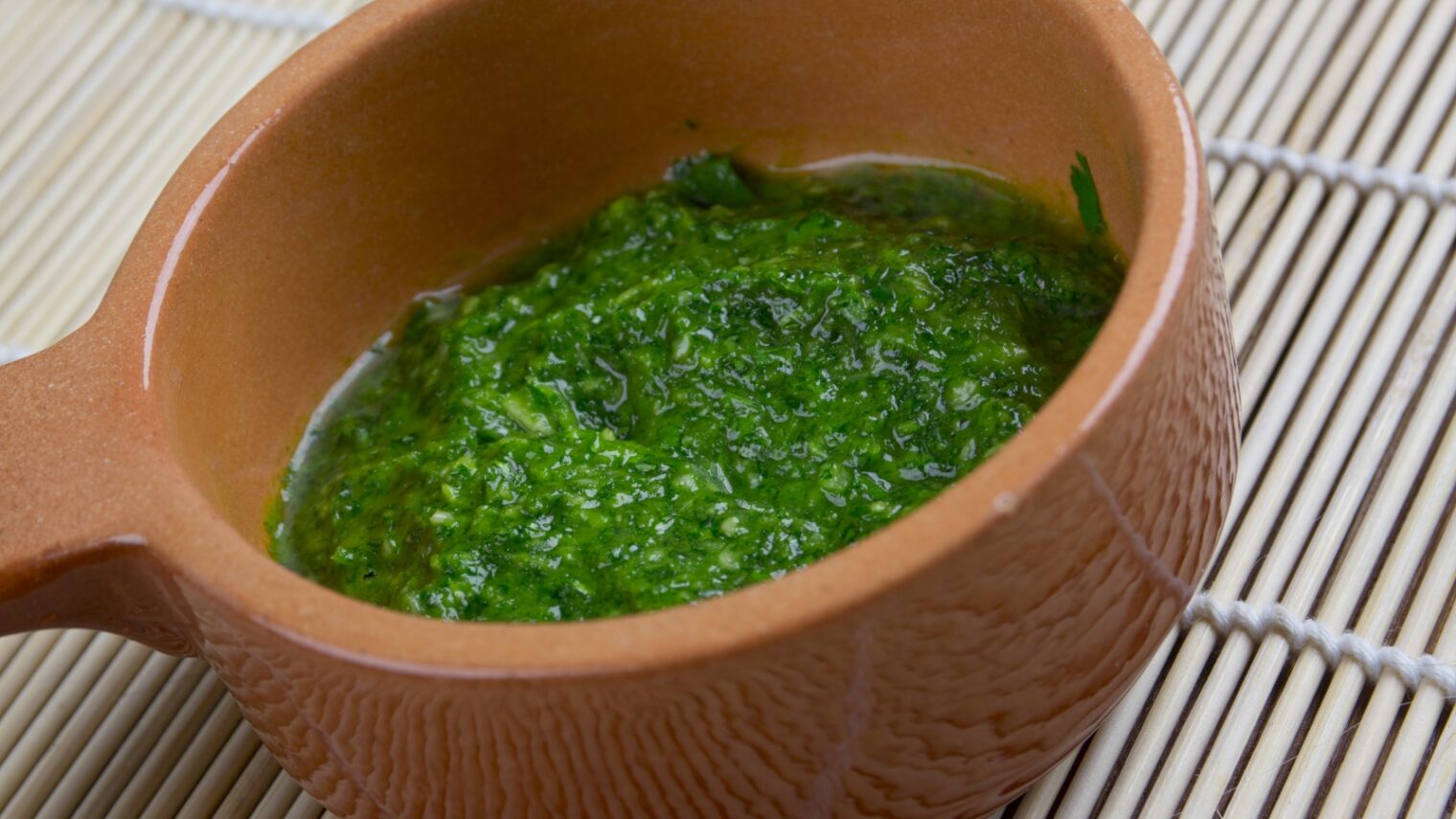It’s Saturday morning, and Adi Cohen’s grandmother is pulling jachnun out of a slow cooker that must be at least 30 years old.
“You ready?” asks Adi, not in reference to the slightly sweet densely rolled puff pastry, which has lost its puff from the 12 hours it sat rolled up in foil, but regarding the ultra-spicy herbed condiment we’re meant to spread on top.
This is the fiery Yemenite Jewish condiment zhug (variously transliterated as schug, s’hoog, shug, zhoug, schoug, and so on), a nearly impossible-to-pronounce salsa of sorts based on spicy green chili peppers, fresh herbs (always cilantro, sometimes also parsley), garlic, and spices like cumin, coriander, and cardamom.
The word comes from mas’chag, a grinding stone used to turn the raw peppers and garlic into a paste believed by the Jews of Yemen to have healing properties.
Everyone’s recipe varies. In addition to the more prominent green one described above, a red version differs in the color of the chili pepper.
Nowadays zhug is everywhere in Israel, gracing the tables of hummus shops, high-end restaurants and refrigerated grocery shelves alike. It makes sense: This signature fresh condiment with bold bright flavors is an element of modern Israeli cuisine that has most certainly led to its recent global takeoff.
The hot herb sauce showing up from the neighborhood falafel shop to Chef Yossi Shitrit’s beloved Mashya restaurant proves that the cuisine of Yemenite Jews has successfully integrated into the general food of the Israeli public.
Across the world in New York, celebrity chef EinatAdmony is a big believer in the condiment that she grew up eating. Zhug was among the original menu items at her Taim gourmet falafel shop in the city. She introduced it to her chef friends and clientele, and there was already a buzz around the condiment among those in the know as far back as 2005.
Now, Forbes magazine has predicted zhug will be one of the year’s biggest global food trends, declaring it the new sriracha — the iconic Thai hot sauce made of fermented chili peppers.
One main reason for its predicted victory over the former reigning king of hot sauces is the minimal effort required to make zhug at home, as opposed to sriracha, which requires a lengthy and complicated fermentation process.
Even the Trader Joe’s chain in the United States began carrying zhug (they spell it “zhoug”) back in March 2018, and everyone knowns that once you’ve made it to TJ’s shelves, you’ve really hit the big time.
In Israel, zhug is now surpassing North African harissa paste as the No. 1 trending condiment, although these things tend to be cyclical.
Here’s a zhug recipe from Chef Jamie Geller in Israel.
INGREDIENTS
¼ pound jalapeños, stemmed and seeded
¼ pound poblano peppers, stemmed and seeded
1 cup cilantro leaves
½ cup mint leaves
½ cup flat leaf parsley leaves
1 teaspoon caraway seeds
6 large, juicy cloves garlic, coarsely chopped
¼ or more extra virgin olive oil
Water as needed
Kosher salt
PREPARATION
Pulse jalapenos, poblanos, cilantro, mint, parsley, caraway, garlic, evoo and water to create a thick paste. Adjust seasoning with salt. Yields 3 cups.














